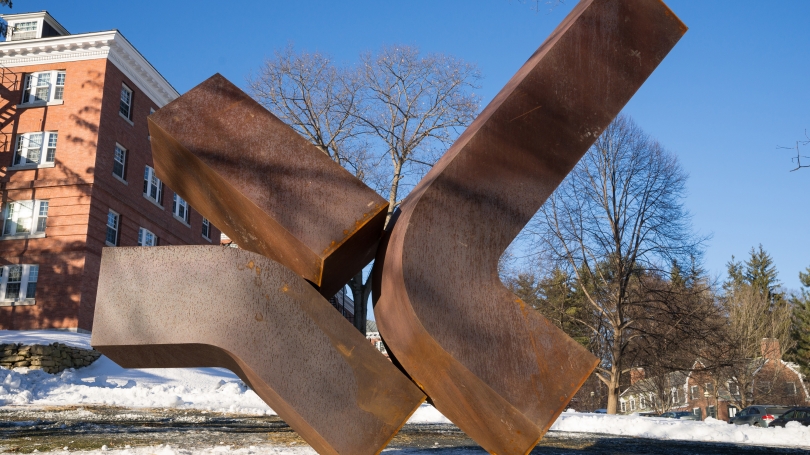The Australian-born artist Clement Meadmore (1929–2005) is best known for large-scale outdoor sculptures that transform hulking lengths of COR-TEN steel into abstract artworks of arresting fluidity and lightness. In the 1940s, Meadmore studied aeronautical engineering and industrial design at the Royal Melbourne Institute of Technology in Australia and initially pursued a career as a furniture designer. In 1953, he decided to become a sculptor and moved to Sydney to pursue his passion for creating abstract, three-dimensional forms out of welded steel. Ten years later, he moved to New York, where he was greatly influenced by minimalism, an artistic movement that attempted to avoid references to anything other than pure form, but he diverged from the minimalist tradition through the dynamic sense of physical movement with which he imbued his sculptures. The artist also insisted his work differed from minimalism because he created it intuitively, without a preconceived form.
Meadmore's sculpture is also characterized by its monumental scale and seemingly weightless gracefulness, as seen in Perdido, a complex, abstract composition made from COR-TEN steel, which was the artist's preferred medium, due to its natural, rusted exterior and resemblance to industrial beams. Meadmore created a balanced, organic arrangement in Perdido using three enormous steel beams and a concrete base, from which the central form projects powerfully into space, while the other two structures curve gracefully away from one another, thus lending a sense of symmetry and movement to the work. Meadmore was deeply influenced by the improvisation and syncopated rhythms of jazz, which inspired the title for this work, named for a musical composition by Juan Tizol that was recorded by Duke Ellington in 1941. This magnificent sculpture was generously donated by Jay and Suzette Schochet and was recently installed on the corner of East Wheelock Street and Observatory Road, near Bartlett Hall, where it can be enjoyed and appreciated by students, faculty, and passersby as part of Dartmouth's ongoing commitment to bringing important works of public art to campus.
